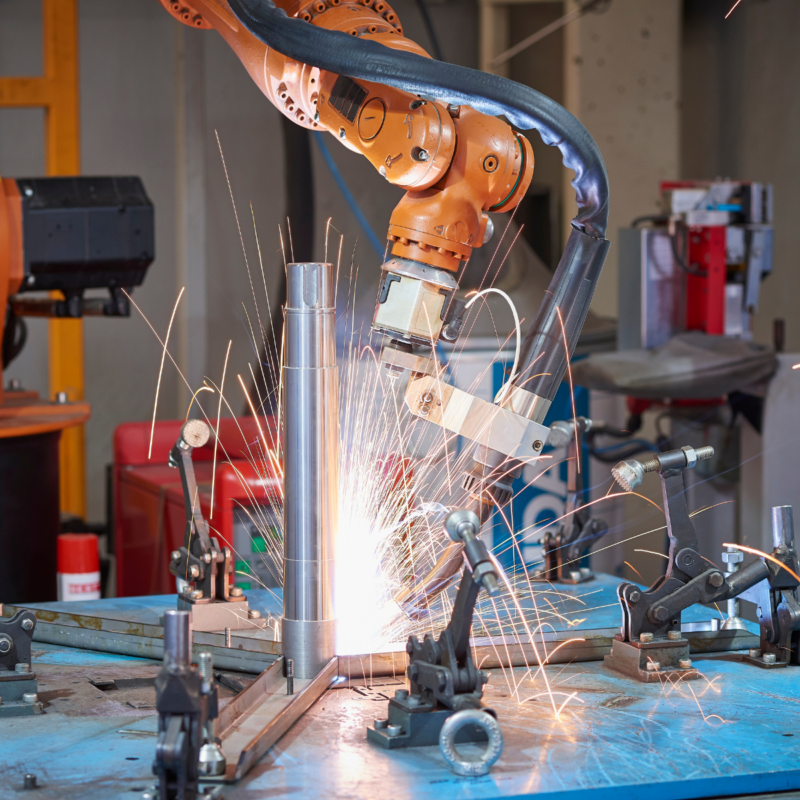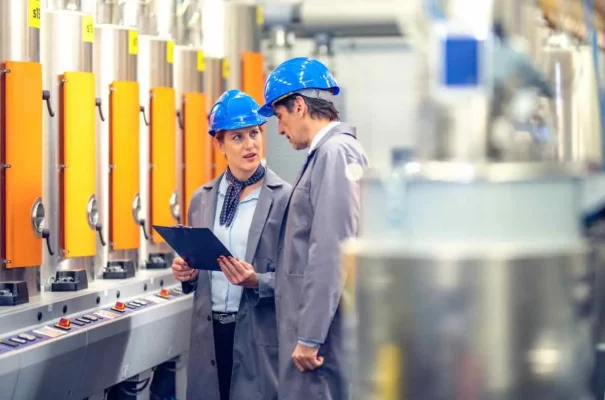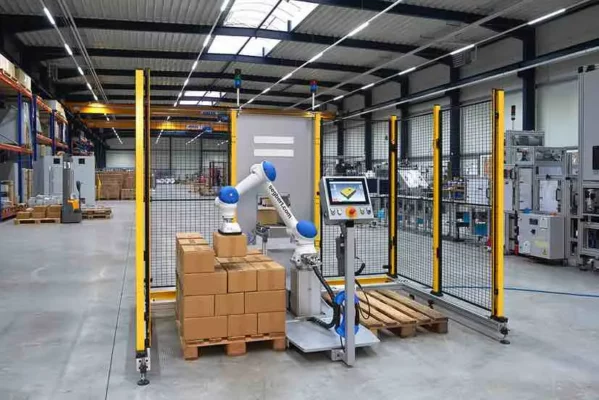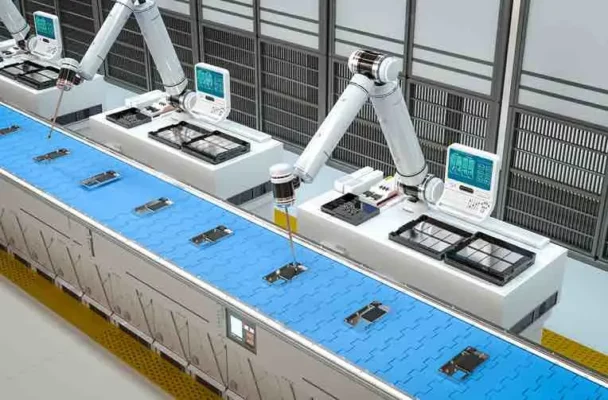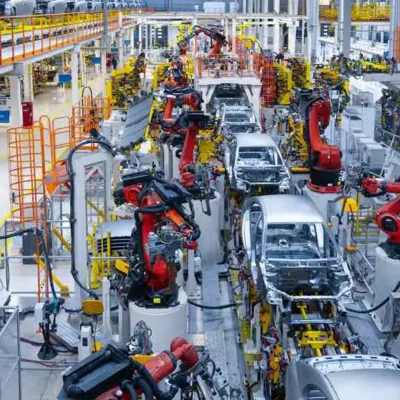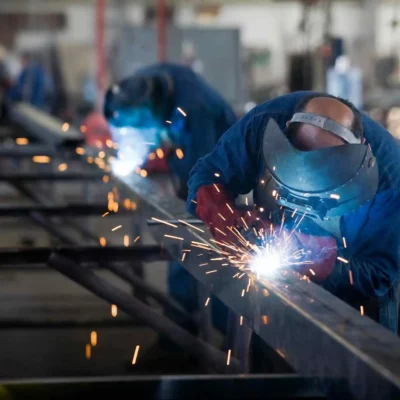Robotic welding is changing how you manufacture products. It uses robots to perform welding tasks with high precision and consistency. Unlike manual welding, robotic welding gives you high-quality results and boosts productivity and safety. You’ll find it useful in industries like automotive, aerospace, and construction, where efficiency and accuracy are crucial. With advancing technology, more companies are adopting robotic welding to stay competitive and meet production demands.
By understanding the basics of robotic welding, you can make informed decisions about integrating this technology into your operations. This leads to better performance and cost savings for you.
What is Robotic Welding?
Robotic welding uses automated robots to perform welding tasks. These robots are programmed to handle welding processes with high precision and speed. They can perform various types of welding, such as arc welding, spot welding, and laser welding. The main components include a robotic arm, a welding torch, and a controller.
How Is It Different from Manual Welding?
Manual welding requires a skilled welder to control the welding process by hand. This involves holding the welding torch, maintaining the correct angle, and ensuring consistent speed. Manual welding is highly dependent on the welder’s skill and can lead to variations in quality.
Robotic welding, on the other hand, is automated. Once programmed, the robot performs the welding task with consistent precision. This reduces the chances of human error and ensures uniform quality across all welds. You don’t need to worry about the fatigue or inconsistency that can affect manual welders.
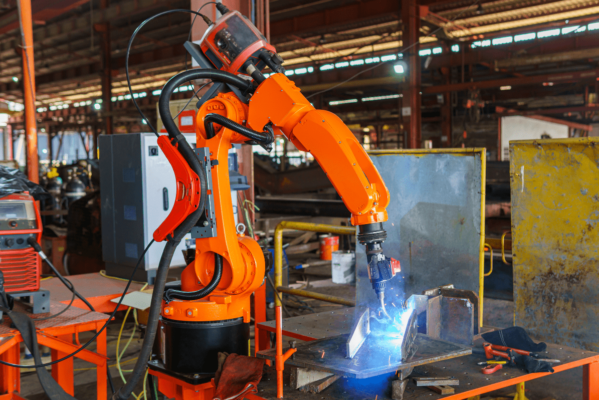
Types of Robotic Welding:
Robotic welding can handle various types of welding processes. Each type is suited for specific applications, materials, and industries. Here are the main types of robotic welding you should know about:
Spot Welding:
Spot welding is commonly used in the automotive industry. It joins two or more metal sheets together by applying pressure and heat to small areas. Robotic arms can perform spot welding with high precision, ensuring strong and consistent welds.
Arc Welding:
Arc welding uses an electric arc to melt metals at the welding point. This type is ideal for thick materials and heavy-duty applications. Robots can maintain a consistent arc length and speed, resulting in high-quality welds.
MIG/TIG Welding:
MIG (Metal Inert Gas) and TIG (Tungsten Inert Gas) welding are popular for their versatility. MIG welding is faster and easier to automate, making it great for high-volume production. TIG welding, although slower, provides cleaner and more precise welds. Robots can perform both MIG and TIG welding efficiently, reducing errors and increasing productivity.
Laser Welding:
Laser welding uses a focused laser beam to join materials. It’s perfect for applications requiring high precision and minimal distortion. Robotic laser welding is used in industries like electronics and medical devices, where small and intricate welds are needed.
Resistance Welding:
Resistance welding joins metals by applying pressure and passing current through them. This method is efficient and suitable for high-volume production. Robots ensure consistent pressure and current, resulting in reliable welds.
5 Benefits of Robotic Welding:
1. Increased Precision & Accuracy:
Robotic welding delivers unmatched precision and accuracy. Robots follow exact programming, ensuring every weld is performed the same way. This reduces errors and defects, giving you high-quality results every time.
2. Enhanced Safety:
Safety is a major advantage of robotic welding. Robots handle dangerous tasks, keeping your workers out of harm’s way. This reduces the risk of injuries from burns, fumes, and electric shocks. Your team can focus on safer, less strenuous tasks.
3. Higher Productivity & Efficiency:
Robots work faster than humans. They don’t need breaks and can operate 24/7. This leads to higher productivity and faster turnaround times. You can meet production deadlines more easily and take on more projects.
4. Cost Savings in the Long Run:
While the initial investment in robotic welding can be high, it pays off over time. Robots reduce labor costs and increase efficiency. They also minimize material waste by making precise welds, leading to cost savings on raw materials.
5. Consistent Quality:
With robotic welding, you get consistent quality across all welds. Robots follow the same programmed path every time, ensuring uniformity. This consistency improves the overall quality of your products, reducing rework and returns.
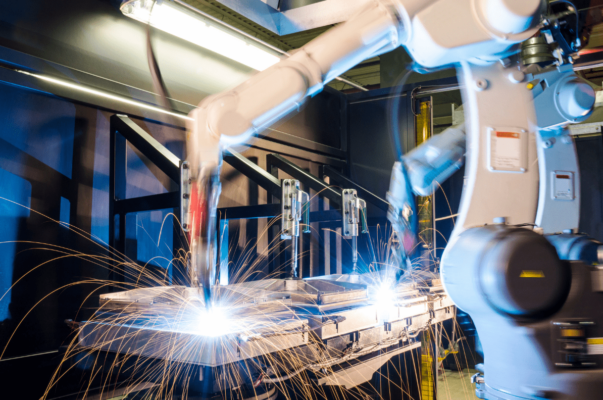
Key Components of a Robotic Welding System:
Welding Robot Arm:
The robot arm is the core of your welding system. It moves the welding torch with high precision and can reach various positions and angles. Different robot arms are available depending on your needs, such as payload capacity and reach.
Welding Controller:
The welding controller is the brain of the system. It programs and controls the robot’s movements and welding parameters. You can set the welding speed, path, and other variables to ensure consistent and accurate welds.
Welding Power Supply:
The power supply provides the necessary electrical energy for welding. It ensures a stable arc and consistent weld quality. Different welding processes require different power supplies, such as AC or DC, depending on the material and application.
Wire Feeder (for MIG/TIG):
If you use MIG or TIG welding, a wire feeder is essential. It feeds the welding wire continuously to the torch. The feeder ensures a steady supply of wire, maintaining a consistent weld and reducing downtime.
Welding Torch & Sensors:
The welding torch delivers the welding current to the workpiece. It comes in various types for different welding processes. Sensors on the torch monitor parameters like temperature and arc length, ensuring precise and high-quality welds.
Safety Enclosures & Barriers:
Safety enclosures and barriers protect your workers from hazards. They enclose the welding area, shielding workers from sparks, fumes, and UV radiation. Safety systems also include emergency stop buttons and alarms.
Applications of Robotic Welding:
Automotive Industry:
Robotic welding is widely used in the automotive industry. It ensures precise and strong welds, which are essential for vehicle safety. Robots can quickly weld car frames, exhaust systems, and other parts, increasing production speed and consistency.
Aerospace Manufacturing:
In aerospace, precision is critical. Robotic welding provides the accuracy needed for aircraft components. Robots can handle complex welds on materials like aluminum and titanium, ensuring high-quality and reliable joints. This helps maintain the safety and performance of aircraft.
Construction & Heavy Machinery:
The construction industry benefits from robotic welding for building heavy machinery and structural components. Robots can weld large and thick materials with high precision. This improves the strength and durability of construction equipment and infrastructure.
Shipbuilding:
Shipbuilding involves welding large metal sheets and complex structures. Robotic welding improves efficiency and accuracy in this industry. Robots can work continuously, reducing production time and ensuring strong, consistent welds. This is crucial for the safety and longevity of ships.
Electronics & Appliances:
In the electronics and appliances industry, robotic welding is used for small, delicate components. Robots can perform precise welds on circuit boards and metal casings. This ensures the reliability and functionality of electronic devices and household appliances.
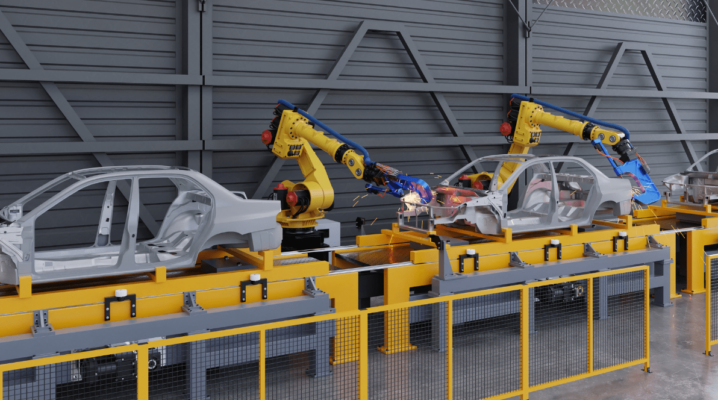
Challenges & Considerations in Implementing Robotic Welding:
Initial Setup & Integration Costs:
Implementing robotic welding involves high initial costs. You need to invest in robots, controllers, and safety equipment. Additionally, integrating the system with your existing setup can be complex and costly. Planning your budget carefully is crucial to manage these expenses.
Training & Skill Requirements:
Your team needs proper training to operate and maintain robotic welding systems. This includes learning programming and troubleshooting skills. Investing in training programs ensures your staff can effectively manage the robots, reducing errors and downtime.
Maintenance & Downtime:
Robotic systems require regular maintenance to function efficiently. This includes checking and replacing parts, updating software, and troubleshooting issues. Scheduling regular maintenance helps prevent unexpected downtime but can still disrupt production. Plan maintenance activities to minimize their impact on your operations.
Adapting to Changing Production Needs:
Manufacturing demands can change over time. Your robotic welding system must be flexible enough to adapt to new requirements. This includes handling different welding processes, materials, and workpiece sizes. Choose a system that allows easy reprogramming and adjustments to meet evolving production needs.
Conclusion:
Robotic welding offers you many benefits, including increased precision, safety, productivity, and cost savings. By understanding the types, applications, and key components, you can make informed decisions. While challenges like initial costs and maintenance exist, you can manage them with careful planning and training. By adopting robotic welding, you can enhance your manufacturing processes, improve product quality, and stay competitive. Consider integrating this technology to achieve better performance and efficiency in your operations.
Top 5 Robot Welding Trade Shows 2024
To discuss more about Robot Welding, join our dedicated robotics community
Are You Looking For A System Integrator?
